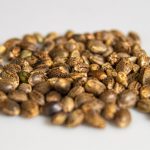Peruvian cocaine, known for its high purity and distinctive characteristics, has become a notable presence in the global illicit drug market. The mention of Prague in this context suggests an examination of how this substance is perceived and utilized within the Czech capital, a city known for its rich history, cultural significance, and, in some quarters, its vibrant nightlife.
Understanding Peruvian Cocaine
Peruvian cocaine is derived from coca leaves, primarily cultivated in the Andean region of Peru. It is recognized for its high quality and purity, making it a sought-after commodity among certain groups. The production and trafficking of cocaine are complex issues, involving organized crime, corruption, and significant health and social risks.
Prague’s Drug Scene
Prague, like many major European cities, has a drug scene that reflects both local and international trends. The city’s drug policy, law enforcement efforts, and public health initiatives aim to balance the reduction of drug supply with the demand, focusing on harm reduction and treatment for users. The presence of Peruvian cocaine in Prague indicates the city’s connection to global drug trafficking networks.
Social and Health Implications
The use of cocaine, including Peruvian cocaine, has serious social and health implications. Cocaine use can lead to addiction, cardiovascular problems, and other health issues. Furthermore, the drug trade is often associated with criminal activity, contributing to social problems such as violence and corruption. Public health campaigns and drug treatment services play a crucial role in addressing these issues.
- Education and Prevention: Efforts to educate the public about the risks associated with drug use, including Peruvian cocaine, are essential. Prevention programs can help reduce the demand for illicit drugs.
- Harm Reduction: Initiatives that focus on reducing the harm associated with drug use, such as needle exchange programs and safe consumption sites, can help mitigate some of the health risks.
- Law Enforcement: Effective and targeted law enforcement strategies can help disrupt drug trafficking networks, reducing the supply of illicit drugs like Peruvian cocaine.







The mention of Peruvian cocaine’s high purity and distinctive characteristics underscores the need for targeted interventions to address its appeal.
It’s heartening to see efforts towards harm reduction being discussed. Needle exchange programs are a step in the right direction.
The complexity of the issue demands a multifaceted approach. Combining law enforcement efforts with public health initiatives seems like a viable strategy.
Prague’s approach to drug policy seems balanced, focusing on both supply reduction and harm reduction. This could be a model for other cities.
The article highlights the importance of understanding the social context of drug use. Education can play a key role in reducing demand.
This article sheds light on a critical issue that affects not just Prague but many cities worldwide. The emphasis on education and prevention is well-placed.
The health implications of cocaine use cannot be overstated. Public health initiatives are crucial in addressing addiction and related issues.
The connection between Peruvian cocaine and global trafficking networks is alarming. More needs to be done to combat organized crime.